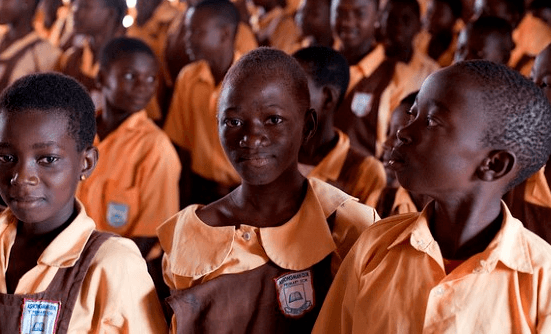
Every year, like clockwork, a familiar national drama unfolds across Ghana. It’s that season of anxious parents, teary-eyed children, long queues at cyber cafés, and countless phone calls to “someone who knows someone”.
The Computerised School Selection and Placement System (CSSPS) – a well-intentioned innovation meant to make senior high school placement fair and efficient – has again thrown thousands of families into turmoil.
What should be a celebration of academic progress often turns into heartbreak, confusion, and, for some, despair.
The promise and the pain
When the Ministry of Education and the Ghana Education Service (GES) introduced the CSSPS in 2005, the idea was brilliant on paper. It aimed to eliminate favouritism, streamline admissions, and make access to senior high education more equitable.
Using algorithms to match students’ choices with their performance in the Basic Education Certificate Examination (BECE), the system promised transparency and fairness.
Nearly two decades later, however, what was meant to bring order has often bred chaos. Every placement season, social media buzzes with desperate appeals from parents whose children have been sent to schools they never chose, sometimes hundreds of kilometres away. Others find their children unplaced altogether – left in limbo, uncertain of their next steps.
And as frustration mounts, human ingenuity (and opportunism) sets in. Middlemen and “protocol agents” emerge, offering to “fix” placements for a fee. What was meant to be a clean system has, sadly, become one more avenue for exploitation and corruption.
A Parent’s Ordeal
Picture this: A mother in Kumasi wakes up at dawn to queue at an internet café with her 15-year-old daughter. They have been there for hours, trying to access the placement portal. The website keeps crashing. When it finally loads, their joy turns to disbelief. The girl, who scored highly in the BECE and chose three top schools in the Ashanti Region, has been placed in a school in a remote district in the Upper East.
The mother’s first instinct is to think it’s a mistake. “Maybe they mixed up the names,” she says, her voice cracking. But soon, she realises she is one among thousands facing the same predicament.
The family now faces impossible choices – should they send their daughter to a faraway school they can barely afford to visit, or should they scramble to change the placement through unofficial channels?
This is not an isolated story. It’s a ritual of frustration that plays out every year in thousands of homes.
What’s Really Going Wrong?
There is no doubt that the CSSPS has helped expand access and reduce blatant bias in admissions. But its recurring failures suggest deeper systemic weaknesses.
Firstly, the algorithm itself is only as good as the data it receives. Many pupils – often through no fault of their own – make poor school choices because they are not properly guided. Teachers and parents may not fully understand how the placement matrix works, leading to unrealistic selections that reduce a student’s chances of being matched.
Secondly, infrastructure and connectivity remain major challenges. Every year, the placement portal slows down or crashes under heavy traffic. Parents queue in the heat, clutching printouts and passwords, trying to navigate a system that seems stacked against them. For many rural families, internet access and digital literacy are additional hurdles.
Thirdly, the communication gap is glaring. The Ministry and GES often release placements abruptly, without adequate sensitisation or support hotlines. Parents are left to rely on rumours, radio discussions, or social media misinformation.
And finally, there’s the human factor – the perception, and sometimes the reality, of manipulation. Some families who can “make calls” or pay “processing fees” seem to secure better outcomes. This perception of backdoor influence undermines trust in what is supposed to be a fair, computerised process.
When Technology Lacks Humanity
At its core, the placement system is not merely about computers or algorithms. It’s about human lives – young people’s dreams, parents’ sacrifices, and a nation’s hope for its future workforce.
We cannot reduce that to a formula on a screen.
Technology should be an enabler, not a barrier. Yet, too often, the CSSPS has become a faceless mechanism that alienates those it was meant to serve. A truly human-centred approach would ensure that the system is not just efficient, but empathetic – that behind every “unplaced” student is a real child with aspirations, not a data point to be deleted or transferred.
The Emotional Toll
The emotional toll on parents is profound. For many families, education is the single greatest investment they can make in their children’s future. Years of toil, savings, and hope culminate in the BECE results.
Then comes the placement – the moment of truth. When the outcome feels unfair or arbitrary, it can break spirits. Parents feel betrayed by a system they trusted. Children feel unworthy, even when they performed well. Teachers feel demoralised, seeing bright students demotivated.
And amidst the chaos, the public discourse often blames the victims – accusing parents of “chasing big schools” or students of not performing well enough. This blame game distracts from the real issue: a system that, while noble in intent, still lacks compassion and responsiveness.
Learning from Others
We need not reinvent the wheel. Several countries have faced similar placement dilemmas and found more humane ways to manage them.
In the United Kingdom, for instance, while school placement is centralised, parents can appeal decisions through transparent review mechanisms. There are helplines, detailed online guides, and public accountability measures.
In Kenya and Rwanda, national placement systems have adopted hybrid models – combining automated allocation with human oversight and strong community support. In both cases, parents receive early orientation on how to select schools realistically based on performance and catchment considerations.
Ghana can learn from these best practices – not by copying blindly, but by adapting thoughtfully.
Charting a Way Forward
So, what can be done to end this yearly heartbreak? Several practical steps could help:Enhanced Guidance and Counselling
School selection should not be left to chance. Every basic school should have trained counsellors who guide pupils and parents through the process, explaining the realistic implications of their choices.
Early Sensitisation Campaigns
The Ministry of Education and GES must launch nationwide education campaigns before and during the selection window. Clear, multilingual communication through radio, TV, and social media will help families understand how the system works.
Improved ICT Infrastructure
The CSSPS portal should be hosted on robust servers capable of handling national traffic. Collaboration with private sector ICT firms could help improve user experience and reduce downtime.
Transparent Appeals Process
Introduce an official, time-bound appeals mechanism – easily accessible both online and at district offices. Parents should be able to request a review of placements without resorting to middlemen.
Stronger Monitoring and Accountability
The GES must ensure that no unauthorised persons or intermediaries interfere in the process. Publicly naming and prosecuting offenders would deter corruption and restore confidence.
Incorporate a Human Touch
Beyond data, human review panels can help address exceptional cases – such as students with disabilities, single-parent households, or special circumstances – to ensure fairness.
A Call for Empathy and Leadership
Ultimately, this is not just an administrative issue. It is a moral one.
When a nation’s children are made to feel helpless in the face of bureaucracy, we chip away at their faith in public institutions. When parents must beg or bribe to secure what should be their children’s right, we corrode the values of fairness and meritocracy we claim to uphold.
We must therefore insist on leadership that not only deploys systems, but also listens to the people those systems are meant to serve. Every stakeholder – from the Ministry to headteachers, from ICT officers to local assemblies – has a role to play in restoring dignity and compassion to this process.
In the End, It’s About the Children
Let us not forget what this is all about: children who have worked hard and dream big. Every year, we tell them education is the key to success. We owe it to them to ensure the door opens smoothly.
Until we fix this recurring problem, the annual placement exercise will remain a national spectacle of frustration – a story of hope meeting heartbreak.
But with honesty, transparency, and empathy, Ghana can turn the page. The computer may make the match, but it is the human heart that must make it right.

About the Column: “Reflections by S.M.A” offers thoughtful commentary on issues of national concern, exploring the intersection of policy, society, and human values in contemporary Ghana.
The post Reflections by S.M.A: Rethinking School Placement Crisis appeared first on The Business & Financial Times.
Read Full Story















Facebook
Twitter
Pinterest
Instagram
Google+
YouTube
LinkedIn
RSS